ISSN ONLINE(2319-8753)PRINT(2347-6710)
ISSN ONLINE(2319-8753)PRINT(2347-6710)
T. Spahiu1, E. Shehi2 and E. Piperi3
|
| Related article at Pubmed, Scholar Google |
Visit for more related articles at International Journal of Innovative Research in Science, Engineering and Technology
Anthropometry is the study of human body. Anthropometric data are very useful for designing, as part of the process for developing a design solution in different areas. In the apparel industry, anthropometric data are an important component for producing high quality garments. Garment fit, is one of the main factors in the decision making of the customer. Different countries have undertaken anthropometric studies for updating their sizing systems used for garment design. The last anthropometric study in Albania, has taken place in 1989 with 10 000 persons participated in this study, distributed in 7 regions of the country. Later on in the following years there are taken several studies, but they have been aimed for small target groups. Moving into the full cycle production, by adding more value in the whole production chain of the garment production firms has become a necessity in the last years. There are few firms working with their own brand for the home market, but they use different garment sizing systems. So, it has become a necessity, for Albania companies which operate in garment and footwear industry to use Albanian sizing system. Updating anthropometric data, will help garment and footwear companies ensuring good quality for their products. The scope of this work is showing a methodology for extracting anthropometric data the implementation of advanced 3D technology. A literature review on anthropometric studies conducted in Albania will be introduced in this work.
Keywords |
| Anthropometric data, 3D scanning technology, garment industry. |
INTRODUCTION |
| Anthropometry is the study of human body in both static and dynamic positions. Anthropometric data taken out from body measurement are used in various areas, such as anthropology, ergonomics, designing of functional garments, etc. In garment construction, anthropometric data are important for designing garments with the right fit. In general, designers use anthropometric data taken traditionally meaning 1D measurements. Improvements in life style has major role in body size and shape. Body size and shape, in all its variations, are very importance in ergonomic design and in improving the comfort and fit in clothing [1]. Consumers, often use garment fit as an evaluation method of the quality of the garment [2]. Body measurement standards based on anthropometric data, known as size charts in the industry, are used throughout the process of apparel design and production [3]. Designing garments with the right fit is related with taking accurate anthropometric data. The lack of updated anthropometric data is one of the major issue related with ill fitted garment. Many developed country update their anthropometric measurements or surveys and systems every 15 to 20 years [4]. With the diffuse of the 3D acquisition systems for digitizing 3D body models, has increased the impact of this technology for anthropometric studies. During these years, the rapid development and spread of computer-related technologies have convinced many retailers and designers that the future of the whole industry depends on its successful implementation in clothing design [3]. |
ANTHROPOMETRIC STUDIES USING 3D BODY SCANNING |
| Traditionally anthropometric data are taken manually using anthrop meter, measuring tapes and callipers. With the introduction of the 3D technology, anthropometric data acquisition has changed. Nowadays there are different systems for digitizing 3D human body model. Although their differences, their main scope is creating a digital 3D body model. Enabling anthropometric data acquisition at different areas, 3D point clouds can be generated which represent the 3D body surface. Previous study has shown that 3D scanning method is a very significant method to obtain anthropometric data of human body parts [5]. Furthermore there is a variety and a large number of 3D scanners available on the market. They are targeted for different parts as head scan, foot scan, or full body scanning. According to the technology used for the digital measurements of the human body can be grouped into four major groups: laser scanning, white light scanning, passive methods and technologies based on other active sensors [6]. |
| Different countries around the word have undertaken anthropometric studies using 3D technology. There is a large number of anthropometric data that can be extracted from the 3D body models. 3D scanning technology through surface digitizing of human body, offers a more detailed information about the body shape compared with the traditional anthropometry. |
| During 1992-1994 in Japan was conducted a large-scale anthropometric survey using both traditional method and whole body scanner Loughborough Anthropometric Shadow Scanner [7]. In 1998-2002 according to the project Civilian American and European Surface Anthropometry Resource (CAESAR) was conducted a large survey over three countries representing the North Atlantic Treaty Organization (NATO): the United States of America (USA), The Netherlands, and Italy. Cyberware’s whole body scanner was used for data collection [8]. Size Uk started in 1999, in the framework of a national research project called Centre for 3D Electronic Commerce. In this survey was used a fully automated process that captured 130 measurements, without body landmarks. These data have been used to create the first live database resource for the UK [9]. Size USA was another anthropometric survey using 3D technology. In these survey were scanned 11 000 individuals on distributed in 12 locations using [TC] 2 [10]. Size China was another large anthropometric survey using 3D technology. This study was conducted for women’s size using traditional and TC2 body scanner [11]. Size Korea used the 3D body scan Body Line Scanner, Hamamatsu Co for taking anthropometric data [12]. During 2010 was conducted another anthropometric survey of Spanish female population using 3D scanner Vitus Smart from Vitronic. The aim of the anthropometric survey was generating anthropometric data from the female population addressed to the clothing industry [13]. |
ANTHROPOMETRIC STUDIES IN ALBANIA |
| Since three decades there weren’t done anthropometric studies in Albania. The first anthropometric study was completed during 1971-1975 conducted by the Institute of the Light Industry and Food. In this study the data were taken for developing sizing tables for clothing production, which were not existing before. 17 000 persons participated in this study, distributed in 7 regions in the country [14]. The second and the last anthropometric study in Albania, started in 1989, where 10 000 persons participated in the study [15]. Unfortunately, it couldn’t be completed because of the political situation at that time. Later on in the following years there are taken several studies, but they have been aimed for small target groups. The first study after 1990-s was done in 2007, where the target group of the study were 804 employees of the State Police. The aim of this study was taking anthropometric data for producing police uniforms [16]. Afterwards, other sporadic anthropometric studies for smaller target group were conducted. One of them is anthropometric measurements in 2012 for the students of the Albanian School of Police. In this target group, 207 persons were measured. The body measurements was grouped according to the height and main girths for producing police uniforms [17]. The same year, the anthropometric measurements for 203 persons, employers of a bank in Tirana, showed a methodology for developing the national sizing system for mass production in industry level [18]. The last anthropometric measurements were done in 2014, in which 566 students of the Albanian School of Police were measured. The scope was the same as in 2012 [19]. |
GARMENT AND FOOTWEAR INDUSTRY IN ALBANIA AND THE NECESSITY FOR A NATIONAL SIZING SYSTEM |
| The garment industry is one of the most important sectors of the economy in the country. This regarding to the weight of exports, number of employees people and social/gender issues. Before 90s the industry has operated under the conditions of a centralized economy. So the entire chain of production from raw materials to the final products have been produced within the country. Now, Albania no longer produces raw materials and fabric. The textile industry has moved in producing garments and footwear with ordered material. They produce different types of garments and footwear for well-known brands in Europe. |
| Today, Albania’s garment and footwear industries represent a large part of Albania’s export economy, accounting for 29 percent of total exports in 2013, and employing roughly 100,000 workers, the majority of them women [20]. The percentage of exports for textile and leather for 2013 has been 28% of the total and the contribution value of Albanian GDP is 25% [21]. |
| One of the greatest challenges faced by Albanian garment companies is changing by moving up in a full package service. These by improving and updating the services and technology used for garment and footwear production. Their scope to develop and market their own collections for home and foreign markets. |
| According to the Business Register from INSTAT there are 706 manufacture of wearing apparel and 197 manufacture of leather and related products in Albania [22]. The majority of the garment firms work in the systems Cut/Make and Trim or Cut/Make or even only Make. In the last two years, there is a tendency from garment and footwear companies to move into the full cycle production, meaning adding more value in the whole production chain of the firms. There are few companies working with their own brand for the home market. These companies use different sizing system. On the other side, this raise the problem of Albanian anthropometric data that could be used by the garment and footwear companies. Using Albanian anthropometric data will be very useful in producing garment and footwear with the right fit, which is one of the main factors in the decision making of the customer. |
AN ATTEMPT FOR TAKING ANTHROPOMETRIC DATA USING 3D TECHNOLOGY IN ALBANIA |
| There have been several attempts for taking manual anthropometric data for Albanian population. Apart from the two survey conducted in 1975 and 1989, which were the largest anthropometric survey for taking anthropometric data from Albania population, the others have been sporadic anthropometric studies conducted for smaller target group. As in the last two years there is a tendency from Albania garment and footwear companies to move into full cycle production for the home market, have raised the need for a national sizing systems. The textile and Fashion Department part of Faculty of Mechanical Engineering in the Polytechnic University of Tirana is equipped with a 3D laser scanning system Konica Minolta VIVID 910. In the last year we have implemented this 3D scanning system for full body scanning with the scope for extracting main body dimensions used for designing made to measure garments [23]. 3D body models created from 3D laser scanning was elaborated in advanced software for data manipulation, extracting main body dimensions [24], are used as avatar for virtual garment design and simulation [25]. |
METHODOLOGY |
| In this study, a small target group of 16 students, 14 female and 2 boys, aged 20-25 years old, were chosen for extracting anthropometric data need for garment design. The body dimensions used for garment construction are taken according to the standard ISO 8559:1989 (E). In the Figure 1 are shown body dimensions taken over the 3D virtual human body. |
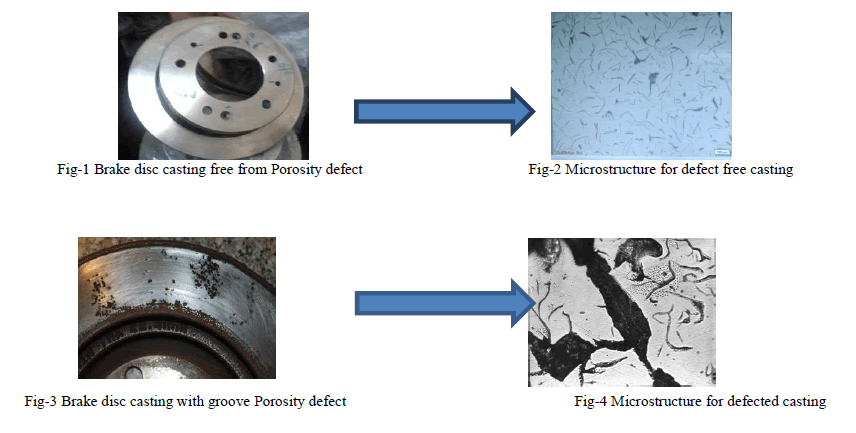 |
EXTRACTING ANTHROPOMETRIC DATA |
| Extracting anthropometric data is done using an advanced software for data manipulation Geomagic StudioTM [26]. This is 3D scanning and data manipulation software for reverse engineering and mass customization of any physical product or object to 3D digital model. In Figure 2 and Figure 3 are shown respectively 3D body model with section planes taken at body landmarks and the main steps followed for extracting body dimensions. Body landmarks over human body are placed manually. The majority of body dimensions taken, are given for one model as is shown in Table 1. This, for showing the methodology for extracting different body dimensions using implementation of 3D scanning system and advanced software for data manipulation. |
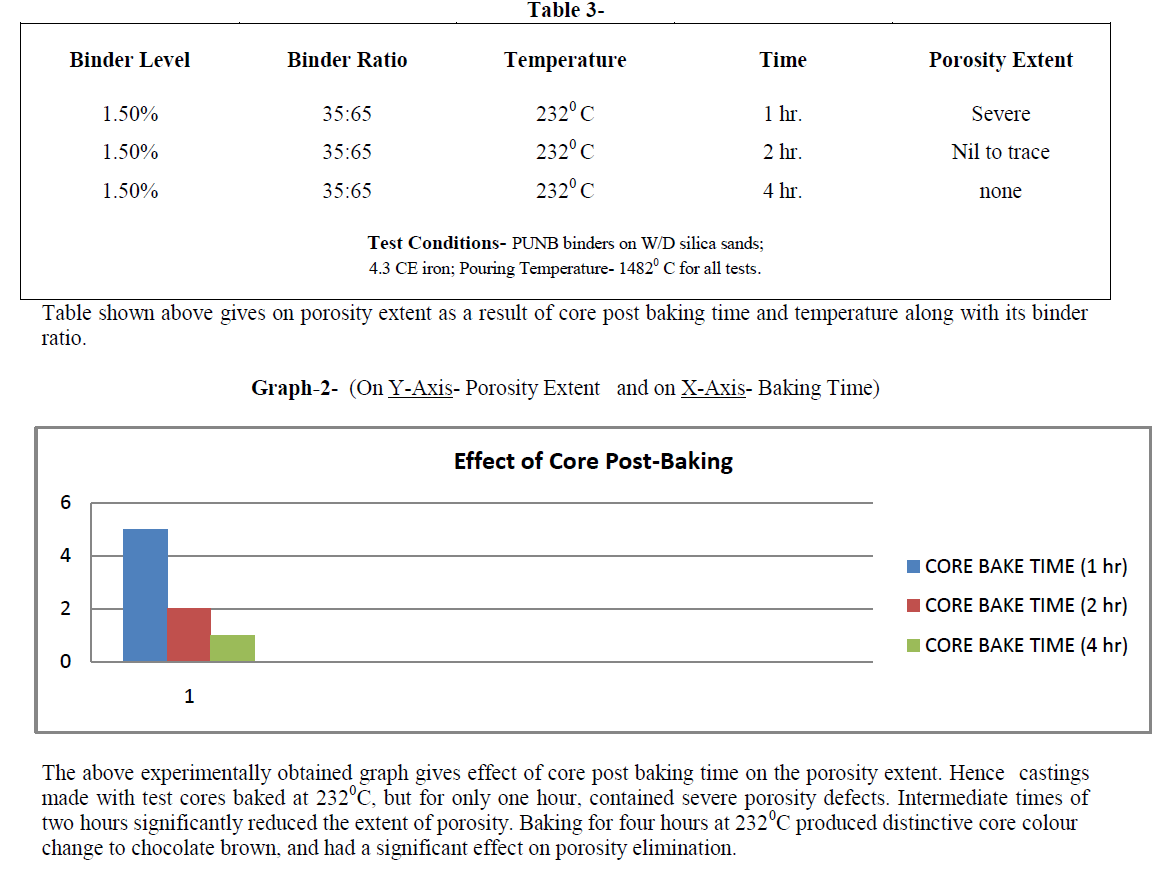 |
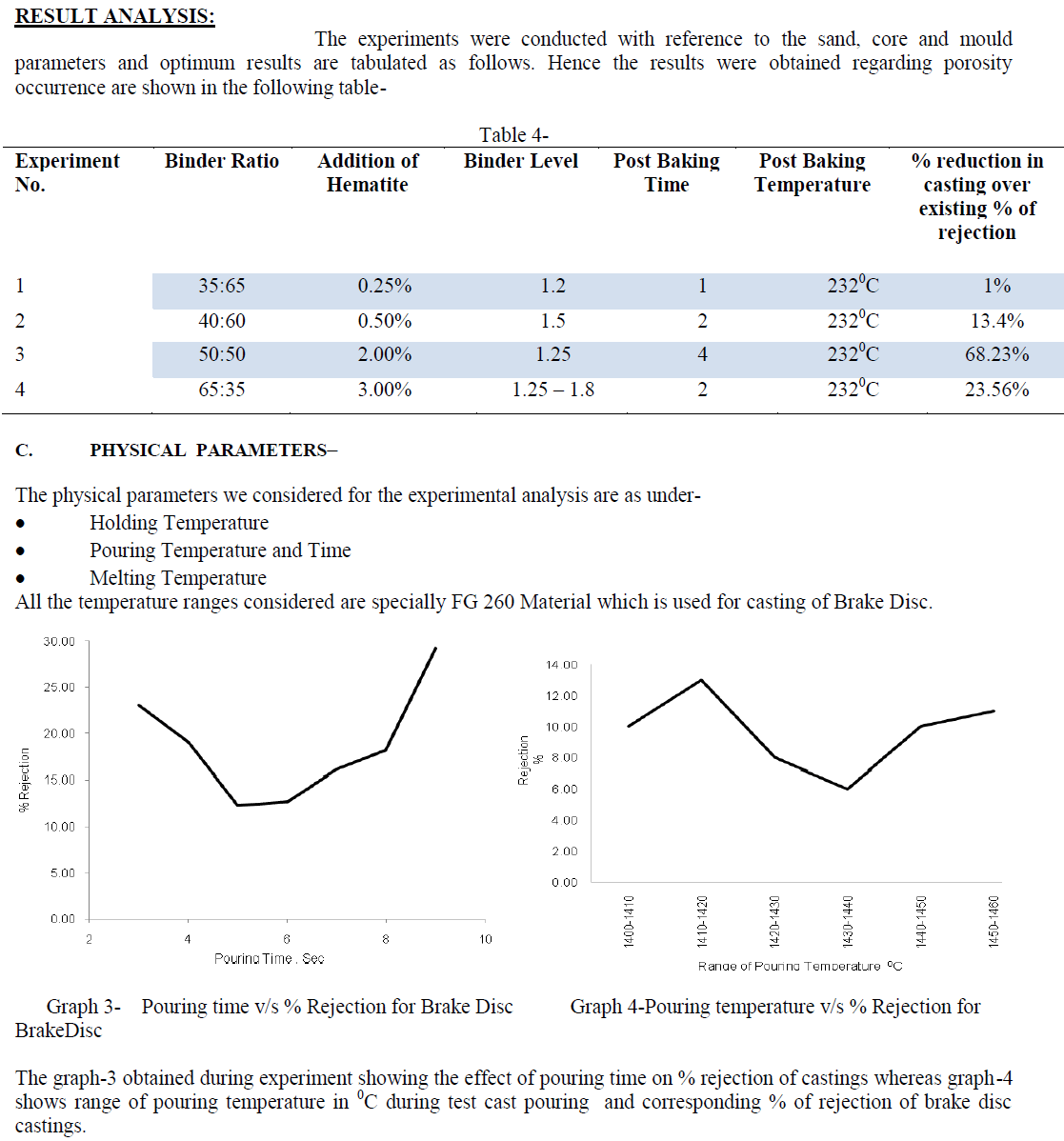 |
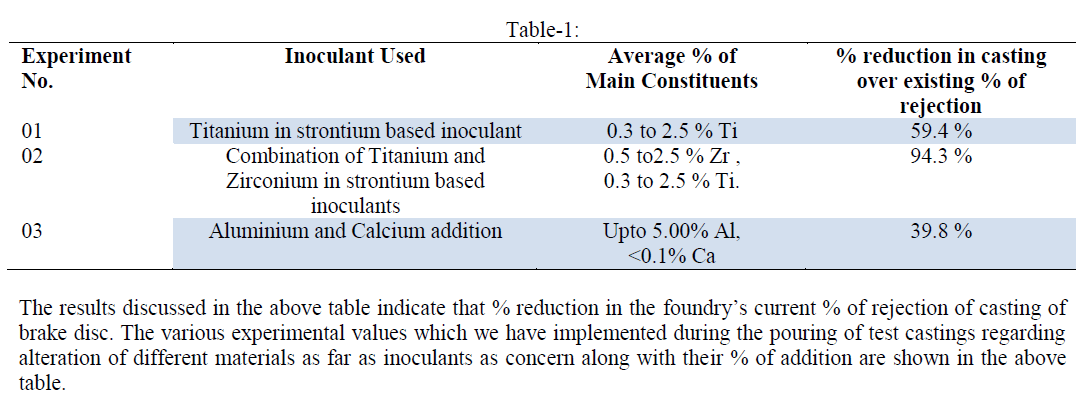 |
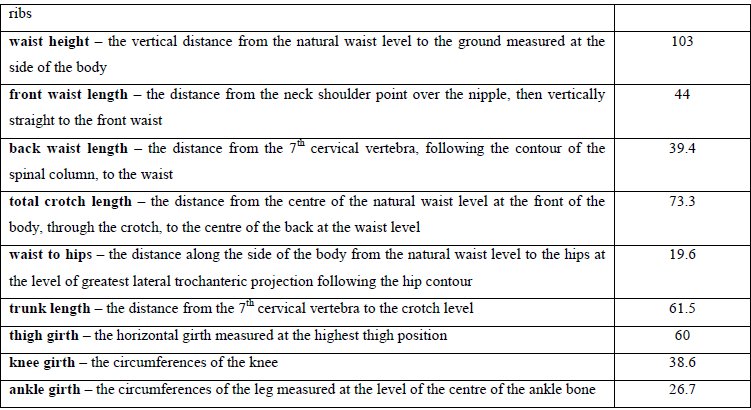 |
CONCLUSION |
| Anthropometric data are a critical issue for developing products with the right fit. In the clothing industry anthropometric data are very useful for ensuring clothing fit. Using advanced technology for 3D garment design has changed the way of garment production. In Albania the garment industry is one of the most important sectors of the economy regarding to the weight of exports and number of employers. There is a growing number of garment and footwear companies working with their own brand for the home market, but with the lack of a national sizing system. The larger anthropometric studies taken years ago are not up-to-date. Actually there is a need for a national sizing system in Albania. These will help garment and footwear companies which operate in the home market to produce garment and footwear with the right fit. These anthropometric data could be used in different application. |
| Implementation of 3D laser scanning system and advanced software for 3D data manipulation showed a fast, accurate and repeatable methodology for taking anthropometric data. Automation of the procedure for extracting anthropometric data from 3D body models will shorten the time. Now, a large group of population can be proceeded for extracting anthropometric data and creating Albanian sizing tables. |
References |
|